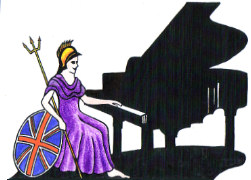Teachers, Accompanists and Piano Entertainers in the UK

UK Piano Page

53 High Street
Berkhamsted, Hertfordshire HP43QH
England
We know that when it comes to pianos, one size
Knightley Farm Workshop
Callingwood
Burton-on-Trent, Staffordshire DE13 9PU
England
Drayton Mill
Stourbridge, Worcestershire DY9 0BT
England
Broughton Pianos have been trading for over 30
9 Rothersthorpe Avenue
Rothersthorpe Ind. Estate
Northampton, Northamptonshire NN4 8JH
England
LSM Pianos Ltd. was established back in 1979. We
Beach's Crescent
Little London
Tadley, Hampshire RG26 5ER
England
We are a specialist piano company supplying pianos
Music Festival for performers and guests Our 10th
18-06-2022 01:30PM
The Morecambe Bay Piano Group was set up to extend
11-12-2021 02:00PM
The Morecambe Bay Piano Group was set up to extend
08-01-2022 02:00PM
The Morecambe Bay Piano Group was set up to extend
12-02-2022 02:00PM
There are many reasons why older pianos go out of tune, and some of them are unavoidable due to the age of the piano, the most common in the UK is central heating drying the piano out.. The most difficult piano for piano tuners to bring back into tune is one that has been neglected for a long period of time. The strings tension drops also because of wear the termination points change this can increase the length of the string thus changing the pitch of individual string in the grope of tree, causing what we call ìfalse beatsî. The pitch of the piano will fall far below 440 Hz (concert pitch). This means that the piano tuner must adjust over 240 strings within an unstable internal environment. The tuner spends time tightening each string in order to raise its pitch. This process takes some time as the tuner must tune each string several times to achieve the required pitch and tension. This is because the adjacent strings will change in response to sudden changes in string tension. To get around this problem, the tuner must first raise all strings to an average degree of tension. After this average level is achieved, the tuner can make minute adjustments to the piano string. It takes time to do this properly, which can be expensive. To avoid a long expensive tuning sessions on an old piano, the piano should be tuned every six months as regular tuning will pay off in the long run.
"We usually recommend our customers at least 2 or 3 tunings per year for a piano getting average use in the home. Ideally 4 tunings spaced through the year to cover the seasonal changes would be best. A new piano settling into a new environment may need more regular tuning for the first year or two. These suggestions only apply to pianos in the average home. Pianos in music schools and teacherís pianos should be tuned more frequently as they receive heavy use. Studio and concert pianos are tuned before every concert or recording."
YamahaAdopt a schedule of regular service:
Tuning and adjustment should always be done by an expert. When your piano requires either one, ask your Yamaha dealer or call a specialist piano tuner. Your dealer can also advise you about the interval between adjustments for your piano under the circumstances in which it is used.